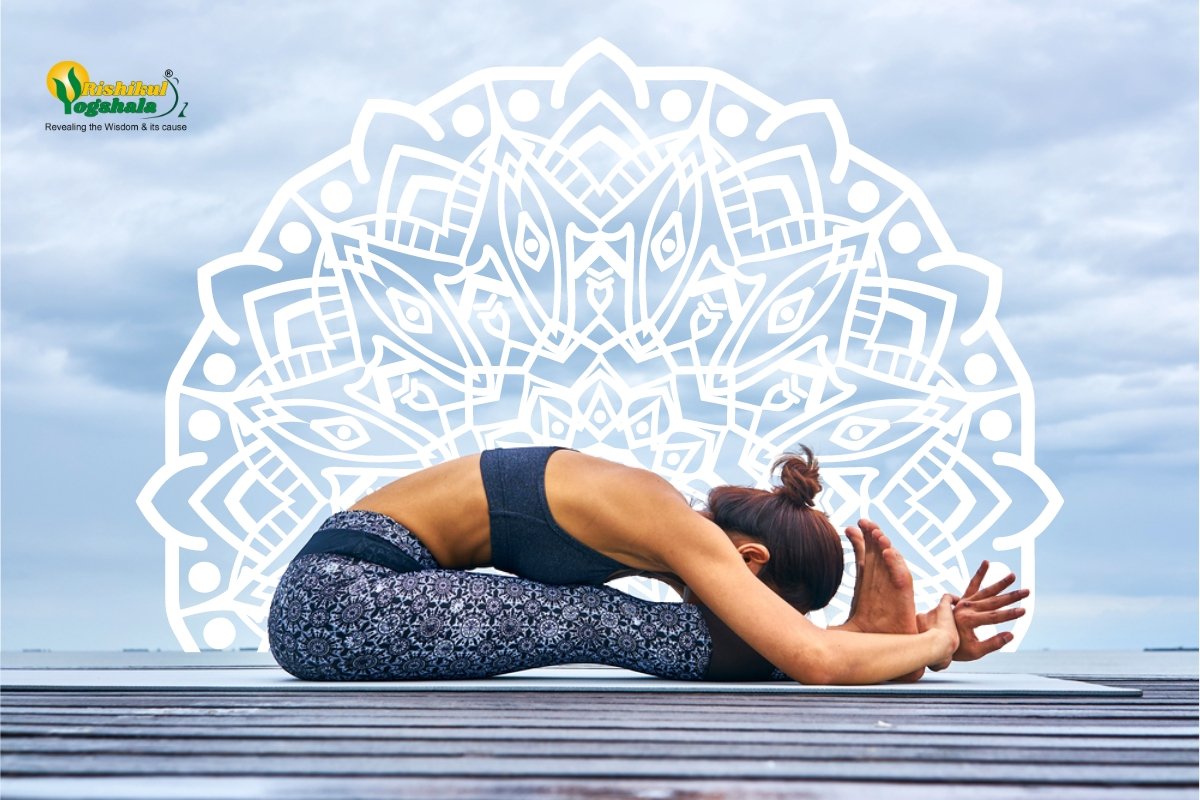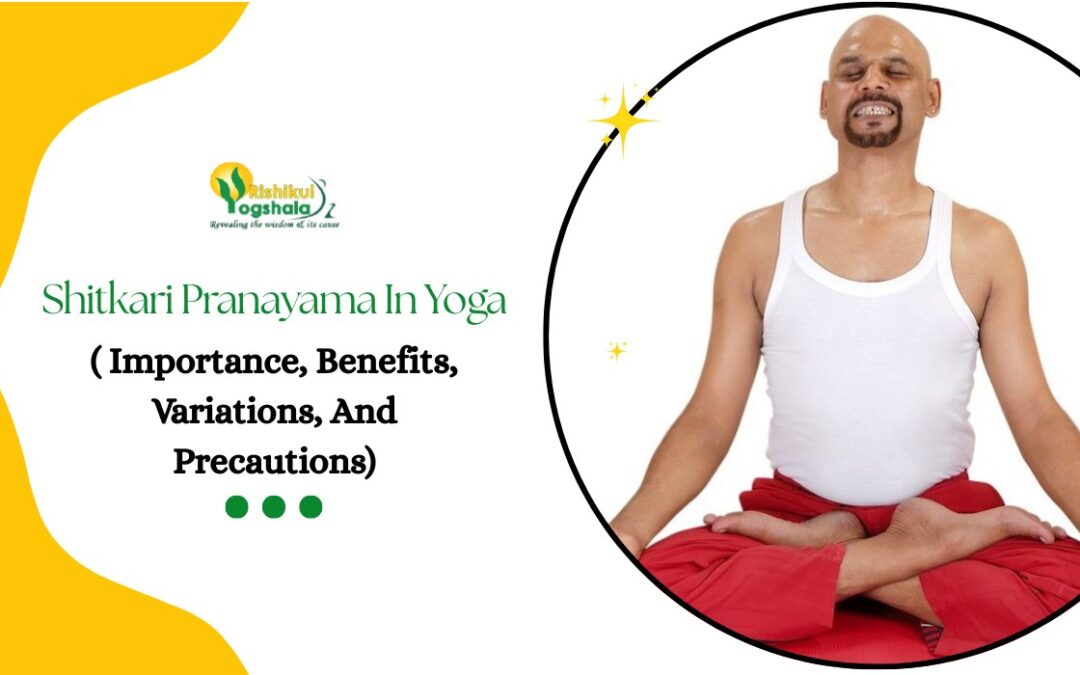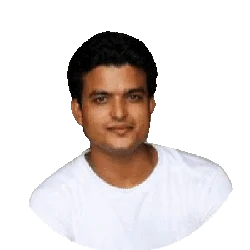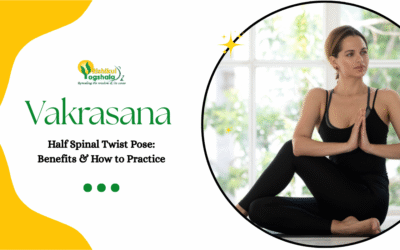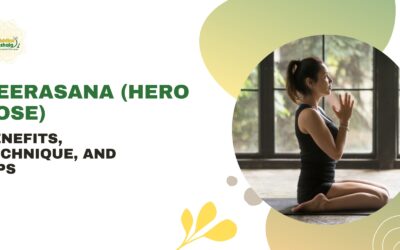What is Paschimottanasana?
Hatha yoga is one of the most famous forms of yoga. You must have heard that Paschimottanasana is one of the classic poses of Hatha yoga that plays its magic on your entire back. It’s a beginner-level yoga pose, so there’s nothing that can stop you from attempting it. However, remember not to overstretch and instead find an iteration of the Paschimottanasana pose that is perfect for your body type. You need a ton of strong mental effort to execute it, and patience is the key. This asana is also known as Seated Forward Bend or Intense Dorsal Stretch. It’s a classic yoga pose in Hatha yoga and modern yoga.
The word “Paschimottanasana” comes from the Sanskrit words “Paschim”, meaning ‘west’, and “Uttana”, meaning ‘intense stretch’. Now, let’s check out its benefits, steps, and tips!
The Benefits of Paschimottanasana (पश्चिमोत्तानासन विधि और लाभ)
Paschimottanasana pose stretches your calves, muscles along the spine, and abductors of your inner thighs, back, and hamstrings, and helps open your hips. This stretch is great for runners who tend to have tight hamstrings. It is also a pose that calms down your nervous system and, in turn, improves your mood. It is, thus, often referred to as a “grounding” yoga asana.
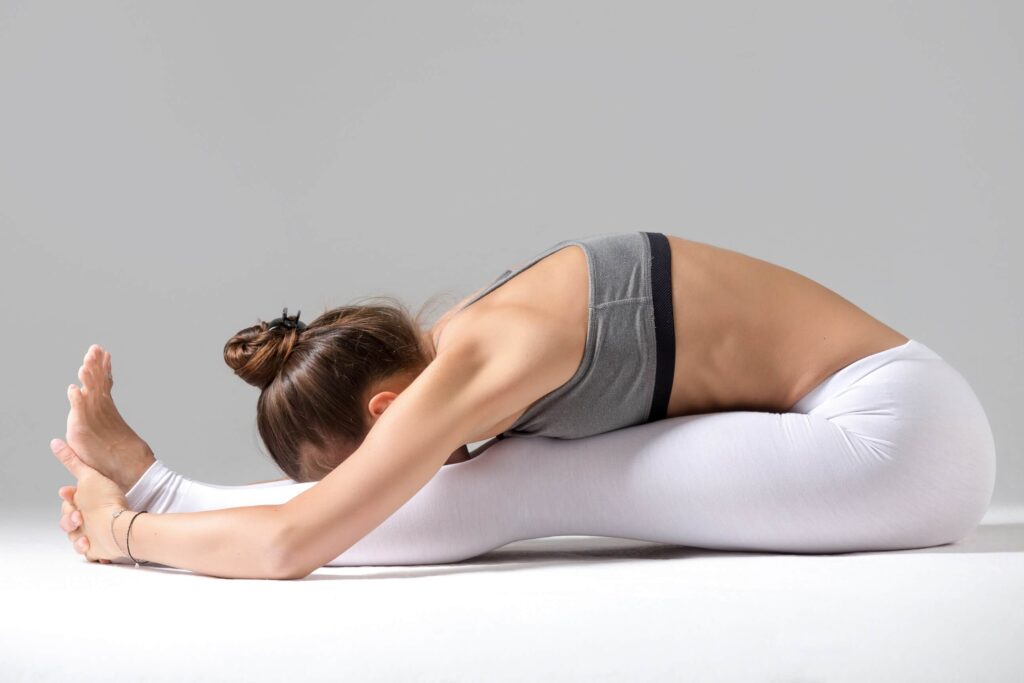
Steps of Paschimottanasana
- Sit with your legs stretched on the flat ground and press your thighs on the floor. This helps in relaxing your hamstrings by contracting your quadriceps and initiating reciprocal inhibition.
- Let your feet be vertical to the ground. Press your heels away from you and flex your feet.
- Inhale and extend your arms straight overhead towards the ceiling. Stretch your spine upward as much as possible. If you feel too much strain on the back of your knees while doing this, lift your chest up slightly. This will lower the intensity.
- Exhale and bend forward to touch your toes.
- Stay in the pose for 1 to 3 minutes. Release your feet to come out, but do so as slowly as you went back to sitting.
Things to Remember While Performing Paschimottanasana
- Straighten your spine with each inhalation. It is normal to feel the stretch in the middle of your hamstrings rather than at the ends of your hips and knees.
- With each exhalation, deepen the forward bend. Try to bring your belly above your thighs instead of your nose on your knees. This helps keep your spine long.
- Keep your neck as a natural extension of your spine, and don’t twist it to look up or move it away completely.
- Once fully extended with your spine straight, decide whether to stay or curl your spine forward.
- Rest your hands loosely on the outer edges of your feet.
- Grasp the ankle or shin within reach. You can also attach straps to your feet. Keep your legs strongly bent throughout.
Beginner Tips on Paschimottanasana
- If your hamstrings feel too tight or you have lower back pain, you may keep a blanket rolled beneath your knees or fold a blanket and sit on the edge of it. This will help you from bending your knees.
- Concentrate on your breathing, the natural curves of your spine, and the tension in your hamstrings and back.
- You have to stretch, not strain.
- Allow your body to draw your legs closer in rhythm with your breathing.
- You can spread your legs slightly to allow some space for your midsection and chest.
- You create a stretch along your entire back when you stretch even an inch. Leaning also creates a space for you to be still during the asana.
- You could also keep a couple of pillows on your lap and release your body’s weight on them.
- If you can’t quite reach your toes, place the yoga straps around your feet and grab them with both hands. You can also bend your knees so that your hands can reach your feet.
Mistake Made While Performing Paschimottanasana
- Keep your knees straight and avoid twisting. When that happens, the stretch in the hamstrings decreases, and the stress moves closer to the joints. This will help you take a deep breath.
- Reach your chest towards your toes to keep your back straight.
- Stop when you feel your back is rounding. Sit up slightly and lengthen your back again.

Paschimottanasana Modifications and Variations
Paschimottanasana pose, or the seated forward bends in general, has two philosophies for rounding the back.
Everyone agrees that the first part of the bend should be done with the back as straight as possible. This method allows you to sit up straight to the point where you can’t go any further without bending your spine forward. Some teachers think the trajectory needs to stop here. Lengthen your spine, hold your breath, and just stay.
Another way is to keep your spine rounded at this point. This usually makes the forward bend superficially deeper, or at least a place to relax a bit.
You don’t have to pledge allegiance to either. Try both and see which suits you better, or switch between the two. If at some point, your hamstrings are very open, you may reach a point where your torso is completely over your legs and your spine is straight.
Two Variations of Paschimottanasana
1. Seated Forward Bend With Bent Knees
You may not be able to stretch your legs fully and reach your toes if your lower back or hamstrings are too tight. In that case, you may bend your knees as much as you want or keep a roll of a blanket and keep it underneath your knees. Remember to keep the spine straight and neutral when leaning forward. Do not round forward.
2. Seated Forward Bend With a Strap
You may use a belt or a strap around your soles to lean forward. Inhale to stretch your spine and exhale while leaning forward. Hold the strap taut and pull as you press your feet onto it. Let the tension in the belt pull your chest forward.
Precaution: If you have arthritis or pain in your hands or wrists, rest your hands in the loop instead of grasping them.
Counter and Preparatory Poses of Paschimottanasana
You can get the most out of the Paschimottanasana pose when you practise less-intense asanas before attempting Paschimottanasana. These preparatory poses help in stretching your lower back and hamstrings. After Paschimottanasana, practise any pose that straightens your back neutrally. Here are some of these preparatory and counter poses for this pose:

Preparatory Poses for Paschimottanasana
- Dandasana (Staff Pose)
- Urdhva Hastasana (Upward Salute)
- Adho Mukha Svanasana (Downward-Facing Dog)
- Uttanasana (Standing Forward Bend)
Counter Poses for Paschimottanasana
- Ananda Balasana (Happy Baby Pose)
- Purvottanasana (Reverse Plank Pose)
- Setu Bandha Sarvangasana (Bridge Pose)
Also Read – Dandasana (Staff Pose)-Steps and Benefits
A Final Word: Safety and Precautions of Paschimottanasana
This position appears to be so simple—even lazy. You simply have to cross your legs over your upper torso to do this. And going low is simple too if you have lengthy hamstrings. However, practising with intention involves being aware of your body’s demands. The legs are lengthened, the hips and buttocks are released, and the entire length of the spine is extended, giving you a lot to focus on. Additionally, keep in mind to engage the quads.
With 200-hour yoga teacher training program, Rishikul Yogshala Rishikesh gives you the perfect opportunity to learn, apply, and impart just about anything related to yoga. You will undergo training for the programme amidst the beauty of nature, at the foothills of the Himalayas.

